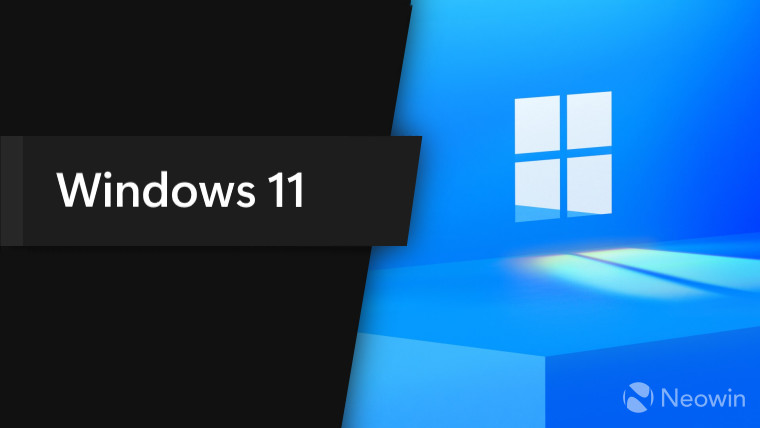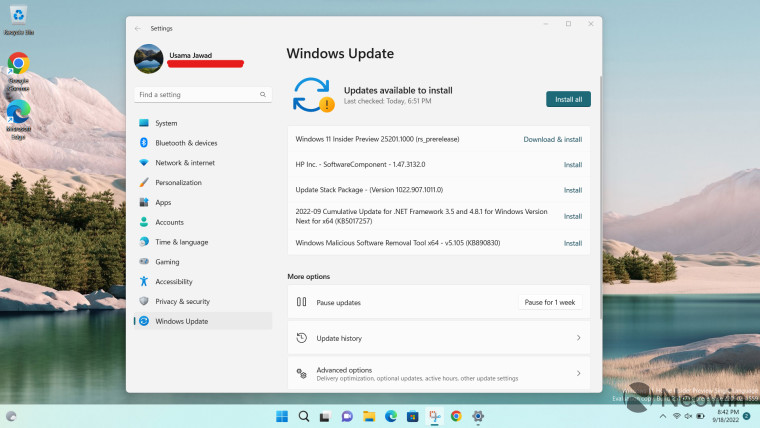
The Windows 11 2022 Update (version 22H2) started rolling out earlier this week and while it introduced lots of gaming, security, and accessibility features, among others, Microsoft also confirmed that it will be releasing even more capabilities next month. This is a continuation of its latest approach to not tie feature availability to annual feature updates, and I think that this is a really good move.
Although many believe that this is a new approach to delivering Windows updates that Microsoft is introducing under its "Moments" engineering effort of rolling out features every few months, the company has actually been working on this publicly since February. Almost eight months ago, Microsoft released AirShare, a public preview for the Amazon Appstore, and Taskbar enhancements as "new experiences", and it is continuing with this delivery mechanism moving forward too.
There are a couple of major reasons why I think that this is exactly the right thing to do. When Microsoft committed to a biannual update cadence for Windows 10, it dug a bit of a hole for itself. While getting two major updates per year sounds great on paper and gets consumers excited, it's close to impossible to deliver significant features within these timelines, especially when every new feature has to go through weeks or months of testing in the Windows Insider Preview program along with development iterations too.
What this meant was that we sometimes got massive updates, but on most instances, we just had to settle for relatively insignifcant "enablement packages". Enablement packages don't download any new features to your computer, they just switch some existing features from a dormant to active state, which isn't really that exciting. As a result, Windows 10 updates became more of a formality with little fanfare since it became very unlikely that the next feature update to Windows would be drastically different than what you had already.
And to me, and likely Microsoft (given that it changed this approach), this is a problem because it kills any excitement behind the Windows update process for consumers. It becomes difficult to even convince people to upgrade to the next version of Windows, because there's nothing really new in it either way so why not stick to your "stable" OS?

With its recent approach of releasing annual updates for Windows 11 along with other "new experiences" (Moments?) spread throughout the year too, Microsoft is remedying this situation. The Redmond tech firm knows that it can obviously deliver one major feature update per year but it's also leaving the door open for any other functionalities that it can deliver to consumers outside of this cadence too.
The benefits of this approach are most evident in the latest Windows 11 2022 Update where Microsoft has rolled out capabilities like a Controller Bar, Smart App Control, better touch navigation for Snap Layouts, and separate Focus and Do not Disturb functionalities, among many other things. And at the same time, the company has also committed to bring tabbed File Explorer, Suggested Actions, Taskbar Overflow, improved Nearby Sharing, and a new Photos app for preview next month followed by general availability in November.
This gives Microsoft some time to test new features in Insider rings for a few months without worrying about delivering them in September of each year. The firm is being careful about the overall mechanism too though, it has clarified that moving forward, it will only announce timelines for new features when it's ready, so don't expect brand-new stuff to be delivered every October or every other month. In a press release sent to Neowin a few days ago, Microsoft mentioned that:
We are committed to delivering continuous innovation by releasing new features into Windows 11 with increased frequency via our servicing technology (like a monthly update) and Microsoft Store updates, in addition to our annual update process. Our goal is to provide you with the best experiences year-round, when new features are ready based on quality and reliability, via our familiar processes. Today we are also announcing that a new set of experiences including the Tabbed File explorer, considered a component of the 2022 Update for all editions, will be ready this October.
We will share more information and documentation when we initially make these features available. We plan a phased rollout timed with the October optional non-security preview release for these features and then they will be made broadly available in the November 2022 security update release. Going forward we will continue to announce, document and deliver new features and experiences when they are ready.
_story.jpg)
This solves another problem for general users too. If a feature is ready, consumers won't have to wait for the next feature update to land to get their hands on that specific functionality. An example is tabbed File Explorer, which has been available to Insiders since build 22572 (albeit as a hidden UX) back in March. While Microsoft clearly isn't ready to ship it in the Windows 11 2022 Update this month, it seems like it's confident that it will be able to push it out to consumers in October/November after some more time in the oven.
As such, there is less of a chance that a half-baked implementation of a functionality (looking at you, Taskbar) will become available to general consumers. Microsoft isn't bound to the annual update timelines externally and while it may have internal deadlines, I'm sure they are more malleable than the public deadlines that were in place for feature updates.
All in all, I think that this flexible approach to Windows updates is a win for both Microsoft and its customers. Of course, no mechanism is perfect - especially not on the software side -, so I'll emphasize that I don't believe that this is a silver bullet, I just believe that it's significantly better than what consumers and Microsoft had to deal with before. It makes Windows updates exciting for the end-user again while giving Microsoft the space it would need to further polish functionalities instead of rushing them out the door.
What do you think of the more flexible Windows update process and release cadence? Let us know in the comments section below!









_small.jpg)










4 Comments - Add comment